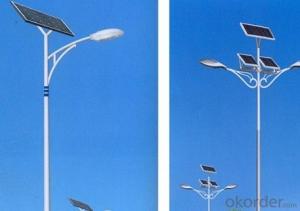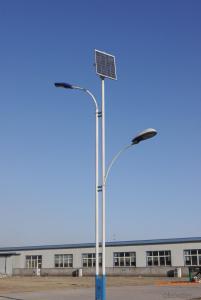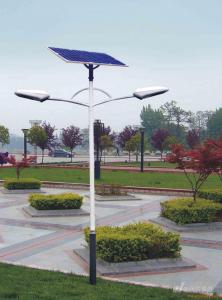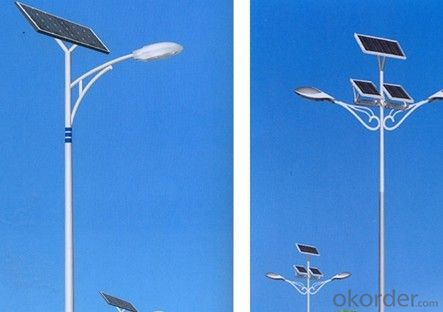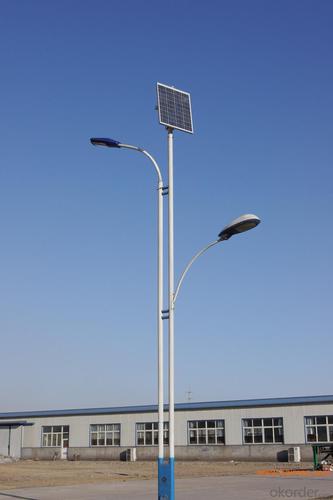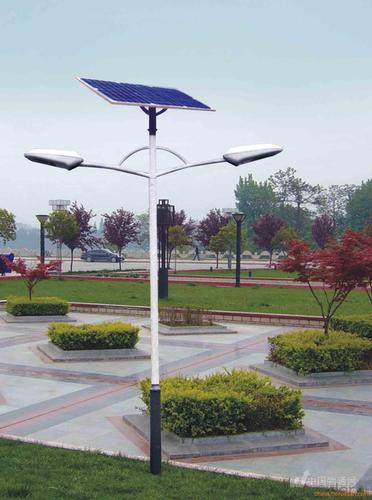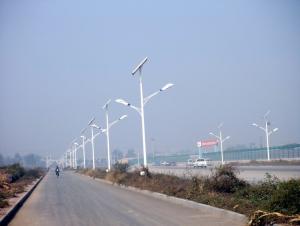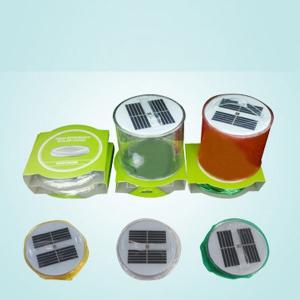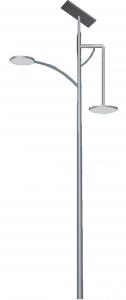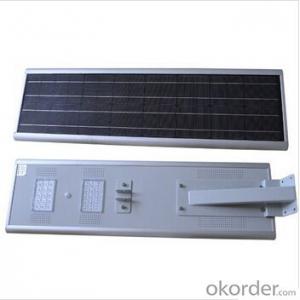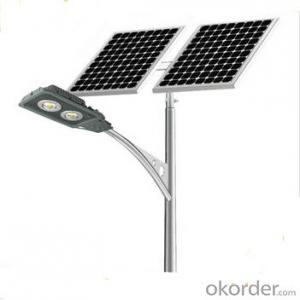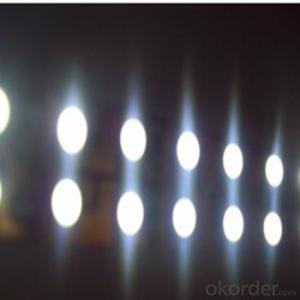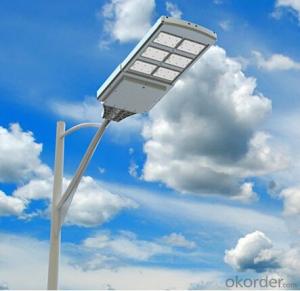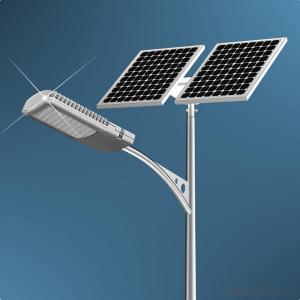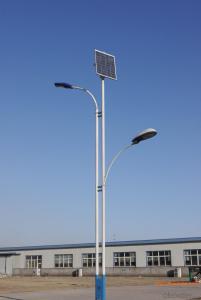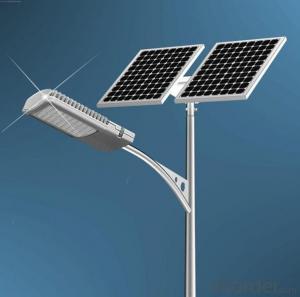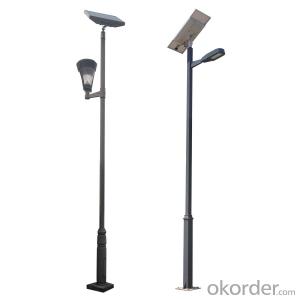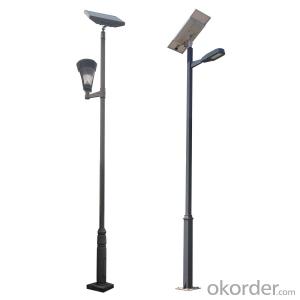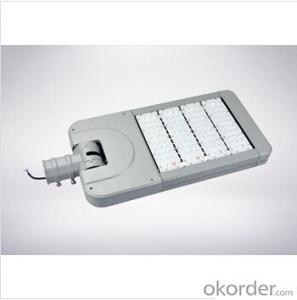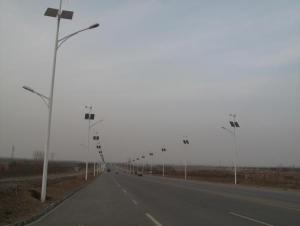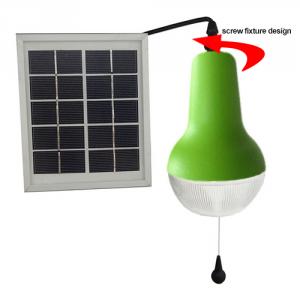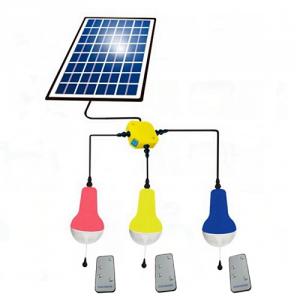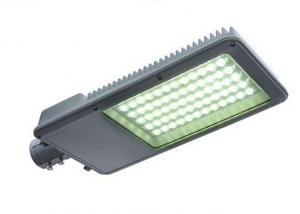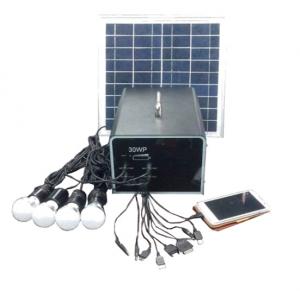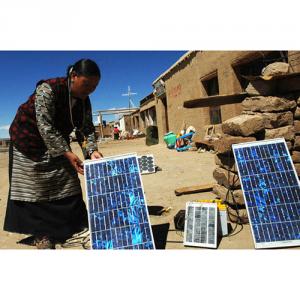White Solar Light Post - Solar Street Lamps, Environmental Friendly, Cost Saving, 70Q
- Loading Port:
- Ningbo
- Payment Terms:
- TT OR LC
- Min Order Qty:
- 1 set
- Supply Capability:
- 5000 set/month
OKorder Service Pledge
OKorder Financial Service
You Might Also Like
Step 1 – Find area in need of street lights
The first thing to figure out is the length of road in need of street lights. This can be a small entrance road only a couple hundred of feet long to miles of streets through an area. Does the area currently have any type of lighting available? What is the reason for needing street lights in this area?
Step 2 – Find out if electric is available
Is the electrical grid already nearby or would you need to call in the power company to bring in electrical lines? If the electric needs to be brought to the area, how much is this going to cost? Depending on how far the grid electric is from the location of the needed lighting, this can be quite expensive.
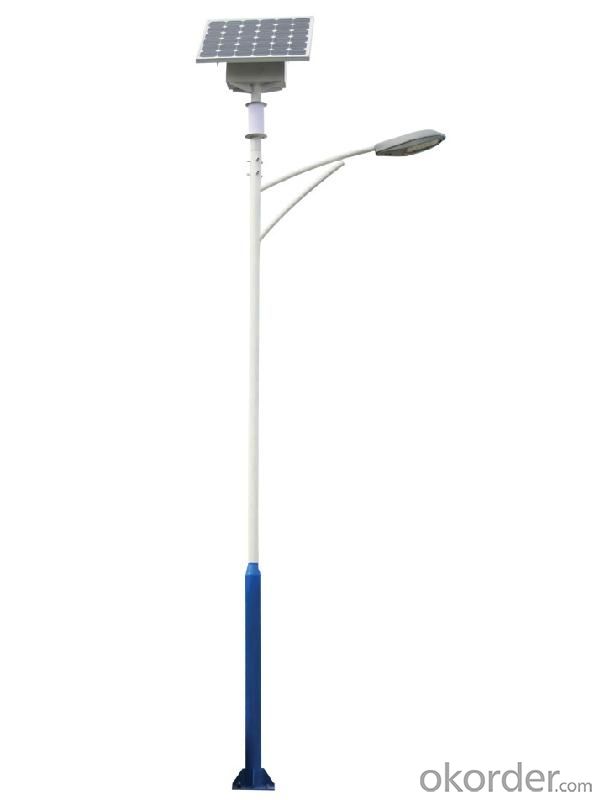
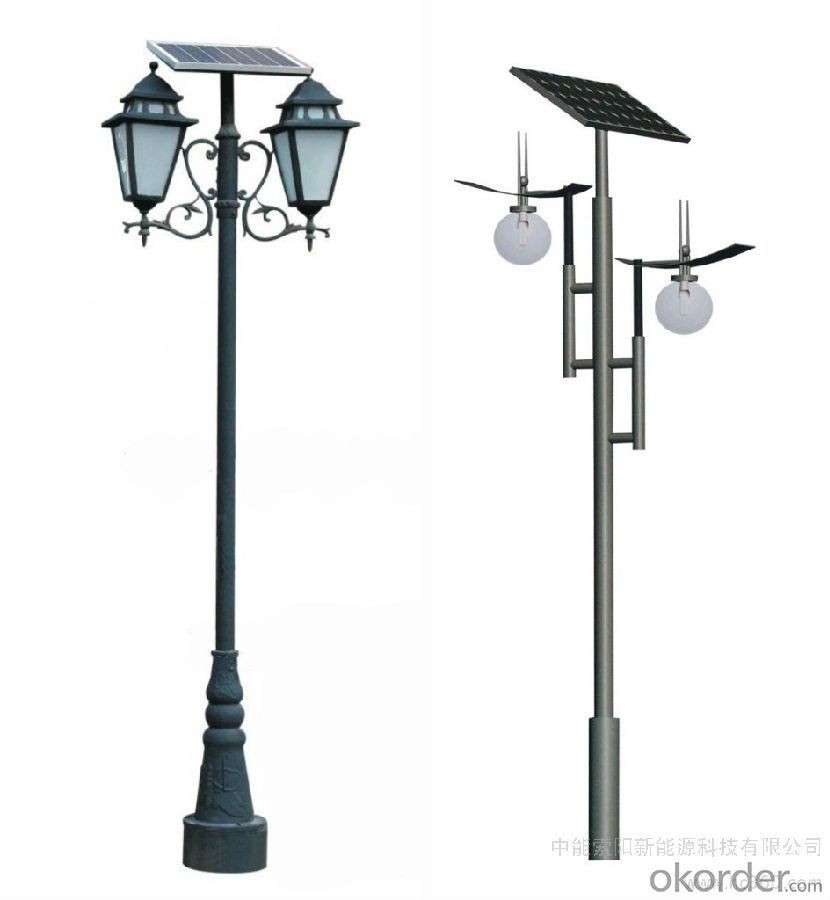
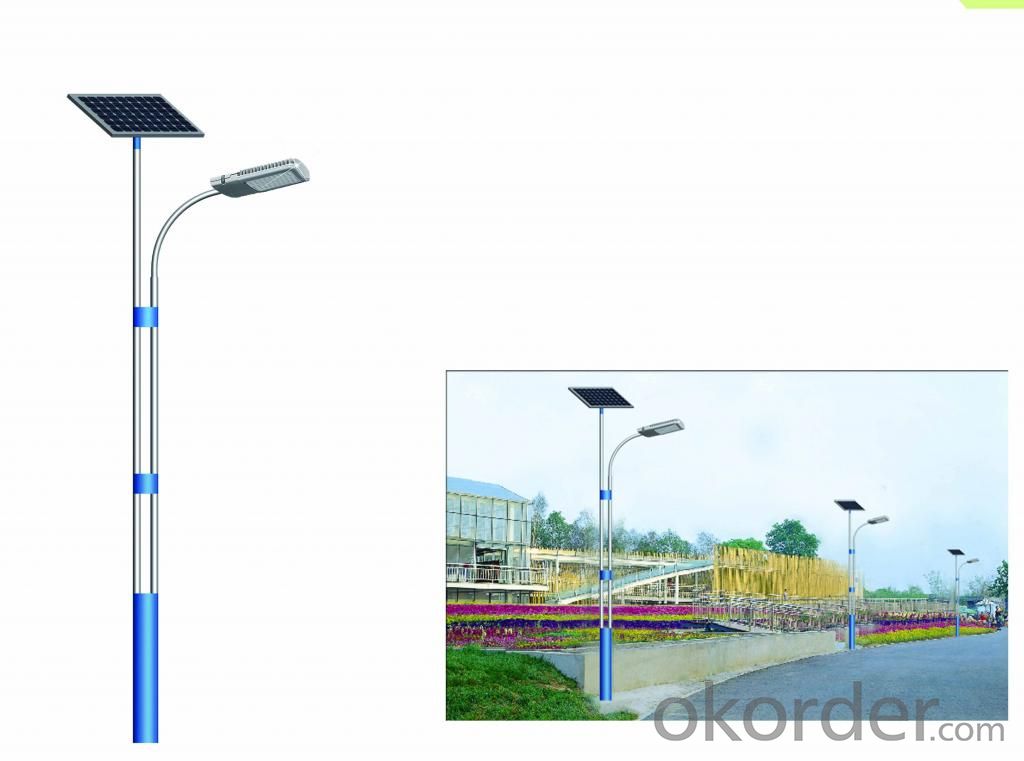
Step 3 – Determine the lighting requirements
How much lighting is needed on the street? Do the lights need to be dark sky compliant? Do the street lights need to run from dusk to dawn or for only a specified number of hours at night? Are the street lights able to dim in the middle of the night and still provide enough lighting? These questions need to be answered before you can decide on how many lights you will need to complete the project.
Step 4 – Find all alternatives
Solar power street lights are an option to traditional electrical lights. Solar street lights do not need the electrical grid to be brought in as they are self-contained units that provide their own electric.The best lighting solution by using lower amounts of power, better optics, dimming features where needed, and cost less in an overall solution.
Step 5 – Contact companies for quotes
The last step after gathering the above information is to contact companies for quotes. Just like with anything else, get multiple quotes and weigh the pros and cons of every company and situation. The lowest quote is not always the best, so make sure to do your research on companies and products before you submit a purchase order.
If you take your time, do your research, and gather needed requirements, your next street lighting project will be a success. Never be afraid to ask a lot questions, they may save you time and money in the long run.
- Q: What is the lifespan of solar light batteries?
- The lifespan of solar light batteries can vary depending on various factors such as the quality of the battery, usage patterns, and maintenance. On average, solar light batteries can last anywhere from 1 to 3 years before they need to be replaced. However, with proper care and regular maintenance, it is possible to extend the lifespan of these batteries.
- Q: Can solar lights be used for tennis court lighting?
- Yes, solar lights can be used for tennis court lighting. Solar lights are a sustainable and energy-efficient solution that can provide ample lighting for tennis courts. However, it is important to ensure that the solar lights have sufficient brightness and coverage to meet the specific lighting requirements of a tennis court.
- Q: Are solar lights cost-effective?
- Yes, solar lights are cost-effective because they use sunlight as a free source of energy, eliminating the need for electricity and reducing electricity bills. Additionally, they require minimal maintenance and have a long lifespan, making them a cost-efficient investment in the long run.
- Q: Are solar lights suitable for parking garages or underground structures?
- Parking garages and underground structures can indeed benefit from the use of solar lights. These lights are a great choice for these areas as they eliminate the need for external power sources or wiring. Instead, they are powered by solar energy and have rechargeable batteries that store the energy during the day and use it to illuminate the lights at night. This makes them not only cost-effective but also environmentally friendly. Moreover, installing and maintaining solar lights is a breeze. They can be easily mounted on walls or ceilings without the need to dig trenches or lay cables for wiring. This not only saves time but also money during the installation process. Additionally, since solar lights don't rely on grid power, they continue to function even during power outages, ensuring uninterrupted lighting in parking garages and underground structures. Functionality-wise, solar lights can provide ample illumination for these areas. They come in various models with different brightness levels and coverage areas, allowing you to choose the appropriate lighting solution based on your specific requirements. Furthermore, many solar lights are equipped with motion sensors, which conserve energy by only activating the lights when movement is detected. Lastly, solar lights contribute to a greener environment. By utilizing solar energy, they reduce the overall carbon footprint and dependence on fossil fuels. This aligns with the growing trend of sustainability and the adoption of renewable energy. Therefore, solar lights are indeed a suitable and reliable lighting solution for parking garages and underground structures, offering both functionality and eco-friendliness.
- Q: Do solar lights have adjustable brightness settings for different activities?
- Yes, some solar lights do have adjustable brightness settings to cater to different activities and preferences.
- Q: Are solar lights easy to move around?
- Indeed, solar lights tend to be simple to relocate. Generally, solar lights are crafted to possess portability and lightness, granting effortless movement and placement according to one's requirements. Usually, they are accompanied by stakes or mounting possibilities, enabling effortless installation or repositioning within different sections of your outdoor area. Furthermore, as solar lights operate through sunlight, there is no need for wiring or electricity, rendering them exceedingly convenient and adaptable for relocation as necessary.
- Q: Can a solar-charged watch be filled with a fluorescent lamp?
- Followed by monocrystalline silicon solar panels, and then is the polysilicon solar panels.
- Q: How do solar lights handle saltwater corrosion?
- Solar lights are generally designed to withstand saltwater corrosion to a certain extent. They are usually made with materials that are resistant to corrosion, such as stainless steel or high-quality aluminum. These materials have properties that make them less susceptible to the damaging effects of saltwater. Additionally, solar lights are often coated with protective layers or finishes that provide an extra barrier against corrosion. These coatings can help prevent the saltwater from coming into direct contact with the metal components of the light, reducing the risk of corrosion. However, it is important to note that while solar lights are designed to handle saltwater corrosion, they are not entirely immune to its effects. Over time, continuous exposure to saltwater can still cause some level of degradation or damage to the light's components. Therefore, regular maintenance and cleaning are crucial to ensure the longevity of solar lights in saltwater environments. Proper maintenance includes rinsing the lights with fresh water periodically to remove any salt residue, checking for any signs of corrosion or damage, and applying appropriate protective coatings or sealants if necessary. By following these maintenance practices, solar lights can effectively handle saltwater corrosion and maintain their functionality and durability over an extended period.
- Q: Do solar lights have adjustable color temperature?
- Solar lights do not usually come with adjustable color temperature. Instead, the color temperature is determined by the LED used in the light fixture. Various types of LEDs emit light at different color temperatures, like warm white (2700K-3000K), cool white (4000K-4500K), or daylight (5000K-6500K). After the LED is installed, the color temperature cannot be changed. However, certain solar lights may provide different models or options that cater to diverse preferences or lighting requirements.
- Q: Are solar lights resistant to dust and dirt?
- Yes, solar lights are generally resistant to dust and dirt. Most solar lights are designed with a protective casing that prevents dust and dirt from entering and damaging the internal components. Additionally, the solar panels are usually made with a protective coating that helps repel dust and dirt, ensuring they continue to function optimally. However, it is important to note that over time, dust and dirt may accumulate on the surface of the solar panels, which can reduce their efficiency. Therefore, periodic cleaning and maintenance are recommended to keep solar lights performing at their best.
Send your message to us
White Solar Light Post - Solar Street Lamps, Environmental Friendly, Cost Saving, 70Q
- Loading Port:
- Ningbo
- Payment Terms:
- TT OR LC
- Min Order Qty:
- 1 set
- Supply Capability:
- 5000 set/month
OKorder Service Pledge
OKorder Financial Service
Similar products
Hot products
Hot Searches
Related keywords
